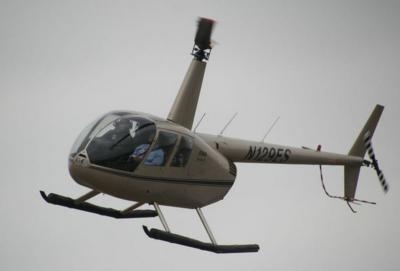Wed, Feb 25, 2015
Aircraft Grounded In Australia After Fatal Accident In New Zealand
The FAA has issues a Special Airworthiness Information Bulletin (SAIB SW-15-08) directed towards owners and operators of Robinson Helicopter Company model R44 and R44 II helicopters which have installed main rotor blades with part number C016-7 of a fatigue crack occurrence, and suggests a preflight check for signs of a fatigue crack on the trailing edge of the blade.

The FAA has received a report from New Zealand of an in-flight failure of the main rotor blade on a Robinson R44 II helicopter which resulted in severe main rotor vibration. The aircraft was difficult to control during the subsequent emergency landing. The New Zealand CAA released Continuing Airworthiness Notice – 62-003 on January 26, 2015 recommending a pre-flight inspection of this area. Robinson Helicopter Company subsequently released R44 Safety Alert C016-7 Main Rotor Blade Crack on February 23, 2015 recommending a preflight visual inspection of the trailing edge of the main rotor blade for any evidence of a fatigue crack initiation.
Australia's Civil Aviation Safety Authority (CASA) issued an emergency airworthiness directive grounding certain Robinson R44 helicopters operating in that country following the New Zealand accident.
The FAA says that at this time, the airworthiness concern is not an unsafe condition that would warrant airworthiness directive (AD) action under Title 14 of the Code of Federal Regulations (14 CFR) part 39.
The FAA says that as part of the daily preflight inspection, the trailing edge of the main rotor blade on the upper and lower surfaces of the blade (a stepladder may be necessary) should be visually checked for any damage which may initiate a fatigue crack. Check in the area shown on the Robinson Safety Alert C016-7 Main Rotor Blade Crack, dated February 23, 2015. If any damage is detected, the blade should be thoroughly examined by a qualified technician prior to further flight. If unusual rotor system vibration is detected in flight, land immediately and have blades examined by a qualified technician.
It is recommended that any positive findings be reported to the Robinson Helicopter Company.
(Image from file)
More News
Aero Linx: Model Aeronautical Association of Australia MAAA clubs are about fun flying, camaraderie and community. For over 75 years, the MAAA has been Australia’s largest fl>[...]
Touchdown Zone Lighting Two rows of transverse light bars located symmetrically about the runway centerline normally at 100 foot intervals. The basic system extends 3,000 feet alon>[...]
“Discovery and innovation are central to our mission at Virgin Galactic. We’re excited to build on our successful record of facilitating scientific experiments in subor>[...]
How To Get A Story On Aero-TV News/Feature Programming How do I submit a story idea or lead to Aero-TV? If you would like to submit a story idea or lead, please contact Jim Campbel>[...]
Student Pilot Reported That During Rotation, “All Of A Sudden The Back Of The Plane Kicked To The Right..." Analysis: The student pilot reported that during rotation, “>[...]
 ANN's Daily Aero-Linx (05.02.24)
ANN's Daily Aero-Linx (05.02.24) ANN's Daily Aero-Term (05.02.24): Touchdown Zone Lighting
ANN's Daily Aero-Term (05.02.24): Touchdown Zone Lighting Aero-News: Quote of the Day (05.02.24)
Aero-News: Quote of the Day (05.02.24) ANN FAQ: Contributing To Aero-TV
ANN FAQ: Contributing To Aero-TV NTSB Final Report: Cirrus Design Corp SR20
NTSB Final Report: Cirrus Design Corp SR20



